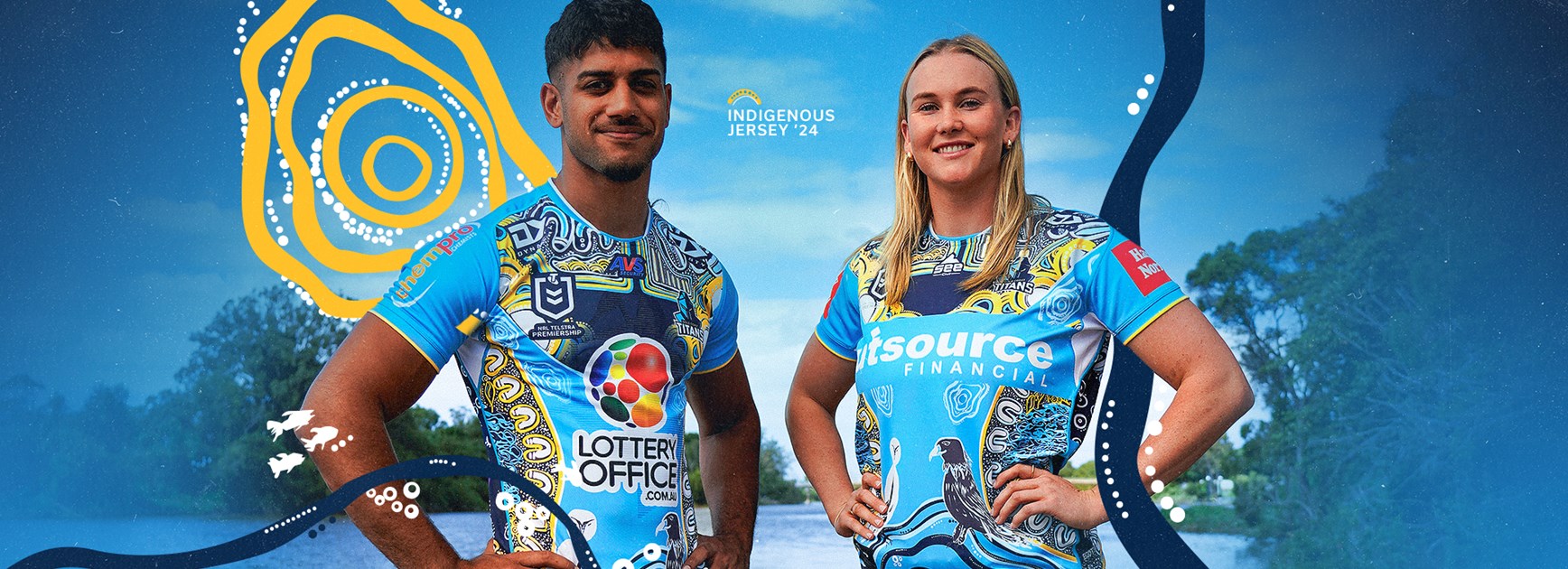
The Gold Coast Titans have created an NRL-first today with the launch of the 2024 Indigenous jersey, which will be worn by both the NRL and NRLW teams in their respective seasons.
Designed by Titans NRL player Alofiana Khan-Pereira's mother, Sylvia Khan, the story depicts the journey of young Titans making their way to first grade with the club and a specific focus on Khan-Pereira and NRLW player, Jaime Chapman's journeys.
Both jerseys are available now via the Titans online store across mens, ladies and junior options
SHOP NRL & NRLW 2024 INDIGENOUS JERSEYS HERE
The NRL side will wear the jersey when they take on the Brisbane Broncos for NRL Indigenous Round on Sunday 26 May at Suncorp Stadium, while the NRLW side will wear theirs at a home game later in the season.
Read on to discover the story behind the artwork within the jersey...
The Gold Coast Titans NRLW 2024 Indigenous Jersey features artwork by Sylvia Khan Koori Doobai, an Aboriginal woman with strong cultural ties and connections to the Bundjalung tribe. Sylvia is from Box Ridge mission, Coraki, located within the Bundjalung Nation, of NSW and is an artist of Bomsy Studio. The artwork depicts two distinct cultural Storylines of both her son Alofiana Khan-Pereira, and Jaime Chapman’s individual journeys of becoming Titans and professional Rugby League players growing up in Northern Rivers and Gold Coast, and how those areas have been part of their journey.
The main theme of the artwork surrounds each of the players, Jullabee’s (Spirit Totem). Spirit totems are known in Aboriginal cultures as connection to spirituality and ancestral ties that guides and provides protection to one’s sense of cultural connection to tradition, Aboriginal practice, tribe, belongingness, and Country.
The artwork depicts Alofiana’s Jullabee connection to the Junru Junur (White Owl) and Jaime’s connection to Kaputhin (Wedgetail Eagle). Each player’s Jullabee are displayed on the front of jersey as a strong representation of connection to Country. The players’ home countries are acknowledged in a display of the country’s symbols and lines of cultural connections with yarning circles.











